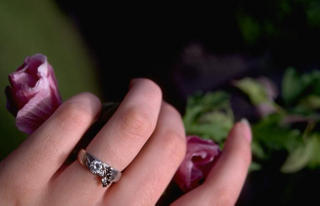The worst thing you can do (at least one of the worst) is to simply turn your camera on, point it at a subject, and let it run on and on. A good video project should have a variety of camera shots. This keeps the viewer interested, allows the director to visually draw attention to important details, and generally helps the flow of the video.
When writing your script (or storyboard), you have two things to work with: picture and sound. While writing narration or dialog (sound) the scriptwriter also needs to visualize what video (pictures) will be on the screen.
Here are several camera shots, the shorthand used in scriptwriting, and some uses for each.
Long Shot (LS):
The long shot is sometimes called an establishing shot. The beginning of a scene is usually a long shot, because that establishes where the scene is taking place. For example, a video shot in the classroom might open with a long shot of the entire classroom, to tell the viewer this is where we're going to be for the next few minutes.
Long shots are good for: illustrating the setting of a scene
Bad for: showing details or holding the viewer's interest for a long time
Medium shot (MS):
A medium shot is a little closer, a little more intimate with the subject. If we go back to our example, after opening your classroom video with a LS of the entire classroom, we might now cut to a M'S of the teacher as he speaks to the class. By the way, the above shot might also be called a "
One Shot" because we see one person.

Of course, that would make this MS a "
Two Shot." I'm sure you can figure out why.
Medium shots are good for: drawing attention to a person or object without revealing many details.
Bad for: A medium shot is a compromise. As such, it does a good job for a lot of things, but not for revealing detail.
Close Up (CU):
Close ups are when we get up close and personal with the subject or item we wish to illustrate. The close up is the director's way of pointing out something interesting, or essential to the plot, without any other visuals distracting the viewer.
Back to that classroom video for an example. We open with the LS of the classroom, then cut to a MS of the teacher talking about how important keyboarding skills are. At this point, we might show someone in CU typing on the keyboard while the teacher talks.
Good for: drawing attention to important detail. Also good for cutting away from the action to allow the editor to cut two takes of a scene together.
Bad for: establishing scenes.
Extreme Close Up (ECU):
The extreme close up draws attention to something by getting extremely close. In this case, it has to be essential to the plot development, and it has to be approached gradually. If Sue has a new class ring, we can't go directly from a MS of Sue talking about her ring to an ECU of the ring; that is too jarring to the viewer. You have to work your way to getting closer to the ECU.
Like this:
LS classroom
MS teacher talking about keyboarding
CU Sue typing on keyboard
MS teacher saying that the new class rings are available and that some students already have one
ECU Sue's hand wearing ring as she types
The ECU is good for: extreme detail when important to the plot
Bad for: everything else
When deciding on what shots to use, try to imitate the human eye and how it works with the brain to receive and interpret information. If you walked into a classroom, the first thing you would do is look around. In effect, your eye is getting an "establishing shot" or LS of the classroom. If the teacher is speaking to the class, you'd probably look at the teacher next. That is your MS, and probably a "one shot" as well. As the teacher mentioned keyboarding, you might look at someone typing on a keyboard, and your eye sees a CU of hands on a keyboard. And so on.
Watch a television show, preferably a scripted show rather than a "reality" show. Identify the various camera shots you see: LS, MS, CU, ECU, one shot, two shot. See when they are used in the script and what effect they have on telling the story.
Certain images and/or photos on this page are the copyrighted property of JupiterImages and are being used with permission under license. These images and/or photos may not be copied or downloaded without permission from JupiterImages






